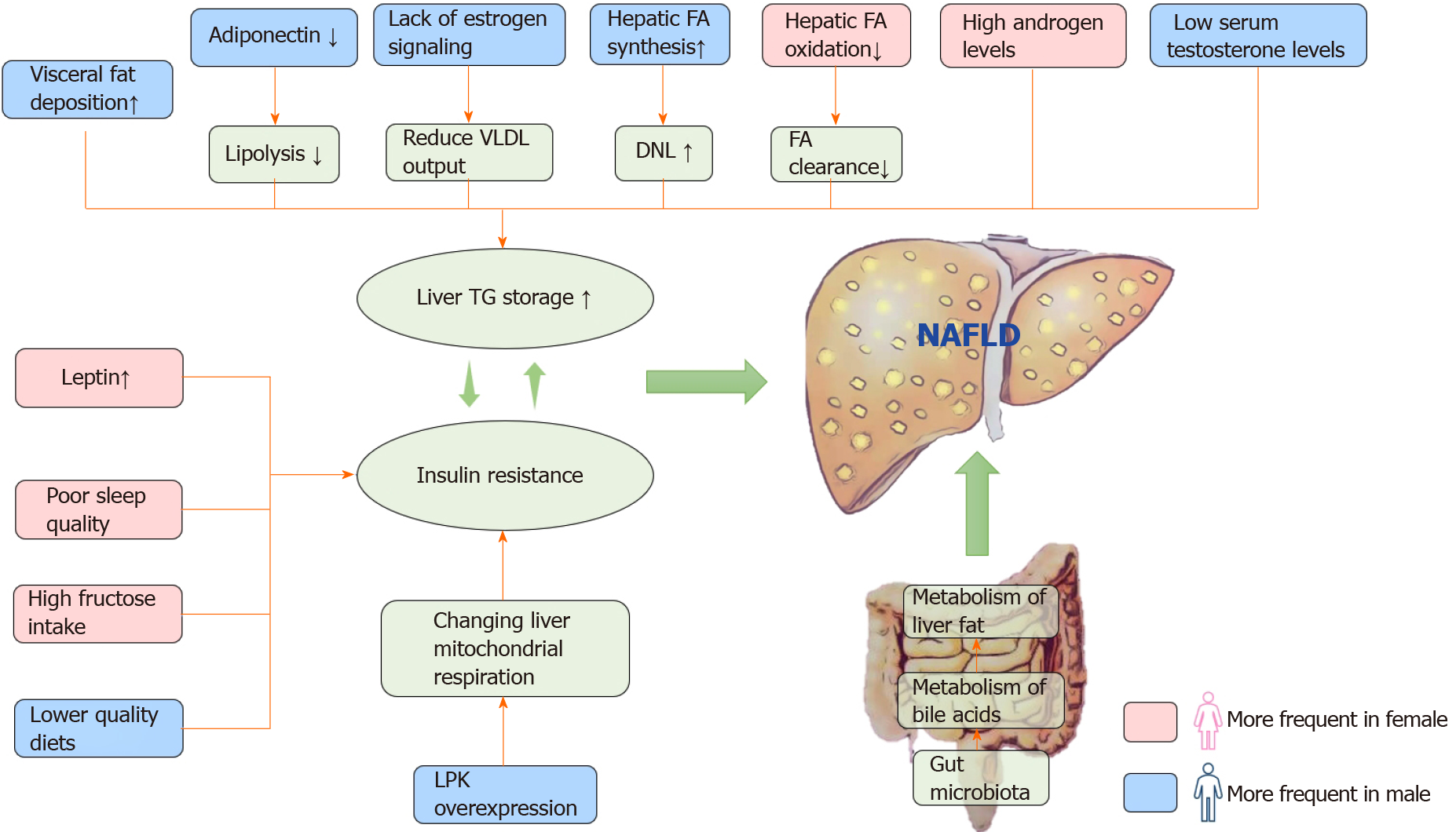Copyright
©The Author(s) 2021.
World J Clin Cases. Feb 16, 2022; 10(5): 1457-1472
Published online Feb 16, 2022. doi: 10.12998/wjcc.v10.i5.1457
Published online Feb 16, 2022. doi: 10.12998/wjcc.v10.i5.1457
Figure 1 Overview of sex differences in etiology and pathogenesis of nonalcoholic fatty liver disease.
Men store more visceral adipose tissue than women. Adipokines mediate fat metabolism, and adiponectin can increase lipolysis; however, excessive leptin can lead to insulin resistance and steatosis. The estrogen receptor plays an important role in the regulation of fat metabolism. Increased androgen levels in women and low testosterone in men are prone to visceral fat accumulation. In the process of fatty acid metabolism, men tend to synthesize, and women tend to oxidize. We found that the overexpression of liver pyruvate kinase can lead to changes in liver mitochondrial function, which leads to the deformation of liver fat. The difference in intestinal microflora between men and women also plays a role in the sex difference in nonalcoholic fatty liver disease (NAFLD). In addition, sleep quality, high sugar intake and diet quality can also affect the formation of NAFLD. VLDL: Very low-density lipoprotein; DNL: De novo lipogenesis; TG: Triglyceride; LPK: Liver pyruvate kinase; FA: Fatty acid; NAFLD: Nonalcoholic fatty liver disease.
- Citation: Chen XY, Wang C, Huang YZ, Zhang LL. Nonalcoholic fatty liver disease shows significant sex dimorphism. World J Clin Cases 2022; 10(5): 1457-1472
- URL: https://www.wjgnet.com/2307-8960/full/v10/i5/1457.htm
- DOI: https://dx.doi.org/10.12998/wjcc.v10.i5.1457









